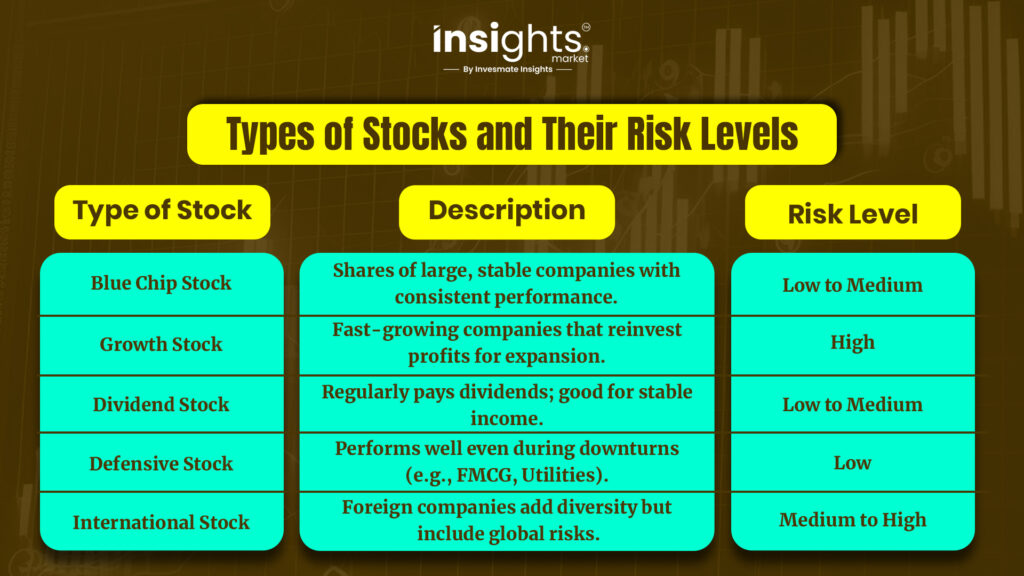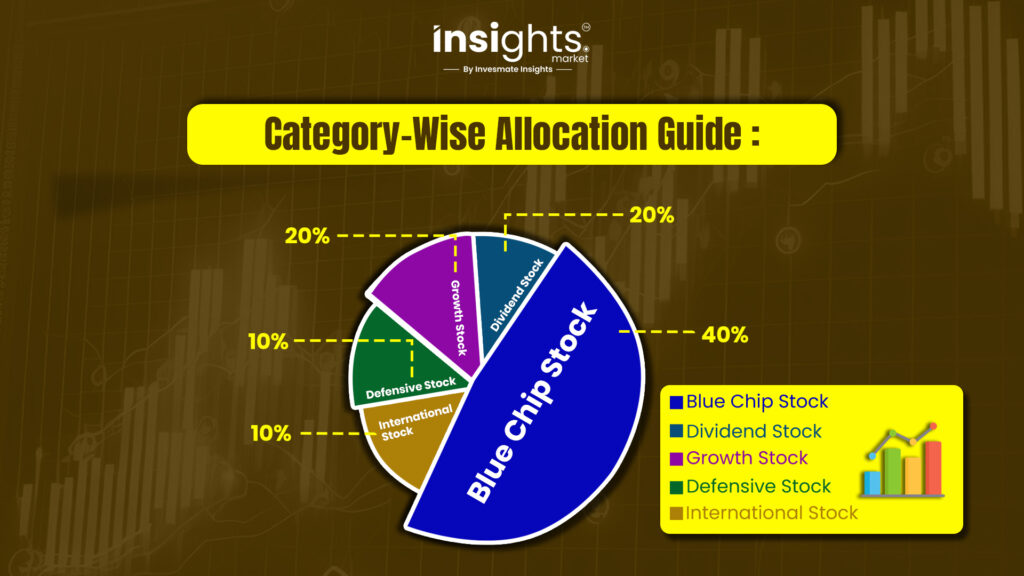![]()
When it comes to the stock market, many people have questions swirling in their minds. Some wonder, “Where should I start?”, while others think, “Is it really possible to build a portfolio with a small amount of money?” Some people even believe that it’s only the rich who can invest in the stock market and that common people can’t survive there.
If even one of these questions has ever crossed your mind, and you want to understand— step-by-step in simple language—how to set realistic goals and build a balanced, profitable portfolio with limited capital, then this blog is for you.

Rethinking the Stock Market
When the topic of the stock market comes up, many people feel hesitation and uncertainty. Most perceive it as a complex and unpredictable domain. But the reality is—through clear goals, proper planning, and step-by-step learning—even a new investor can build a balanced and successful stock portfolio.
Whether you want to ensure financial security after retirement, save for a large future expense, or simply grow your capital steadily—this blog offers practical, real-world guidance. It breaks down the fundamental steps to build an effective portfolio in the stock market, helping new investors start with confidence.
Step 1: Define Your Financial Goals
Before investing, ask yourself an important question: “Why do I want to invest in stocks?”
Your goals could be:
- Saving for retirement
- Preparing for a down payment on a house
- Funding your child’s higher education
- Generating regular passive income
Once your goal is clear, think about these three questions:
- When will you need the money?
- If within 10 years, your investment should be long-term.
- If within 10 years, your investment should be long-term.
- How much risk can you tolerate?
- Some can take moderate risks; others want zero risk.
- Some can take moderate risks; others want zero risk.
- Do you need this money soon?
- If “No,” then you can afford to stay invested longer.
- If “No,” then you can afford to stay invested longer.
The answers will help define your risk tolerance and stock selection strategy. The clearer your goal, the more organized your investment plan.
Also Read: Why You Should Only Take Financial Advice from a SEBI-registered Investment Advisor
Step 2: Understand Types of Stocks
Knowing the types of stocks is essential before investing. Each type carries a different level of risk and return.

Suggested Start for Beginners: Blue Chip, Dividend, and Defensive Stocks.
Step 3: Learn Asset Allocation
Asset allocation is crucial in determining how much to invest in each stock category to balance risk and reward.

This structure provides a mix of stability and growth.
Step 4: Start Small, Invest Regularly
You don’t need lakhs of rupees to start. The key is to invest small amounts consistently.
Even with ₹500, you can begin investing via SIP (Systematic Investment Plan) using platforms like Groww, Zerodha, or Upstox. Regular investments help you benefit from rupee cost averaging and reduce the impact of market volatility.
Step 5: Diversify Your Portfolio
Diversification means not putting all your money in one sector. This reduces the risk if a specific sector performs poorly.

Investing across these sectors makes your portfolio more resilient, stable, and profitable in the long term. Knowing top companies from each sector helps you make informed decisions.
Also Read: The Regulatory Backbone of India’s Capital Market
Step 6: Use Stock Market Tools
To make smart decisions, use helpful tools and platforms:
- Screener – Helps find good stocks using filters.
- Moneycontrol, ET Markets etc. – Stay updated with daily market news and analysis.
- Stock Simulators – Learn trading strategies without real money.
- Brokerage Reports – Understand a company’s fundamentals and performance.
These tools make you more informed and confident as an investor.
Step 7: Review Regularly
Buying stocks isn’t the end—you must monitor them. Review your portfolio every 6 to 12 months.
Check:
- If the company fundamentals have changed.
- If any new risk has emerged.
- Whether portfolio balance is intact.
If one stock grows too much and disrupts balance, consider selling a portion and investing in lagging but promising stocks. This process is called rebalancing, which helps maintain a healthy and profitable portfolio long term.
Also Read: A New Alternative in the Future of Digital Banking
Step 8: Be Aware of Taxes & Expenses
Alongside profits, investments come with costs:
- Brokerage Fees – Charged per transaction; affects overall returns.
- Capital Gain Tax – 10% on profits exceeding ₹1 lakh if held over a year.
- Dividend Tax – Taxable as per your income tax slab.
- Frequent Trades – Increase both tax burden and transaction costs.
Hence, invest mindfully and trade only when necessary to reduce costs and maximize profits.
Step 9: Stay Invested for the Long Term
The market will rise and fall—that’s natural. But that doesn’t mean you panic-sell.
According to experienced investors, those who stay invested for the long term reap the best rewards. So, even during downturns, stay patient.
“It’s not market timing, but time in the market that matters.”
This long-term vision will build a strong portfolio foundation.
Also Read: Do You Want to Become a Successful Investor? Learn These 7 Habits
Conclusion
Many are intimidated by the stock market, assuming it’s only for the wealthy. But the truth is, anyone with a clear goal, the right stock choices, and a consistent investment habit can build a profitable portfolio.
These 9 steps won’t just guide you—they’ll teach you, based on real experience, how to grow wealth with the right mix of planning, diversification, and discipline.
Big profits don’t need big money. What you need is patience, the mindset to stay long-term, and a willingness to learn.
Every small investment you make today is a step toward financial freedom tomorrow.
FAQs
Yes, you can start with just ₹500 or less through SIP.
8–15 stocks across different sectors are ideal to start with for good diversification.
Beginners should start with Blue Chip and Dividend stocks as they’re more stable.
It depends on your income, age, financial goals, and mental readiness for risk.
No. Avoid panic selling. Stay invested with a long-term perspective.




